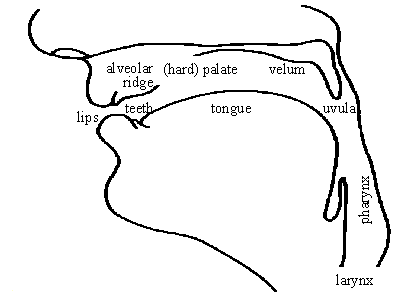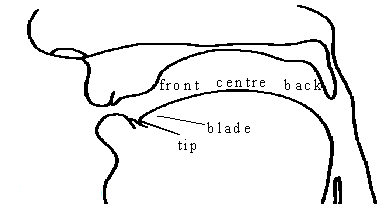In speech production, including all sounds in Spanish, the primary source of power is air expelled from the lungs. This airflow travels through the windpipe (trachea) and exits through the mouth, nose or both. Along its path, the airstream is modified by the shape, position and activity of the speech organs it encounters. These modifications, or disturbances, give speech sounds their unique properties. Consequently, most speech sounds are categorized on the basis of the organs involved in their production. Understanding the structure of the throat and mouth, which together form the oral tract, is essential. Figure 1 highlights the key anatomical points of reference.

The alveolar ridge is the promontory that curves across the roof of the mouth just behind the upper front teeth and which can be felt with the tip of the tongue. The palate, or hard palate, is the dome-like structure that lies behind the alveolar ridge. The velum, or soft palate, lies immediately behind the palate – most people can reach it with the their tongue if they run the latter’s tip over the palate in the direction of the back of the mouth. The uvula, as its name implies, is a small grape-like organ that hangs from the lower end of the velum.
Much further back can be found the larynx, a cartilaginous organ containing two small muscular folds. The latter items are the vocal cords and the gap between them is known as the glottis. The larynx's position can be easily identified, because part of it, the thyroid cartilage, is externally observable. This is the Adam’s apple. The pharynx is essentially a tube that connects the back of the mouth to the larynx.
The tongue – a formless muscle – is of particular importance in the production of speech sounds, and you normally have to refer to a specific part of it when you classify a speech sound. The parts normally referred to are shown in Figure 2.
Figure 2 The principal points on the tongue
